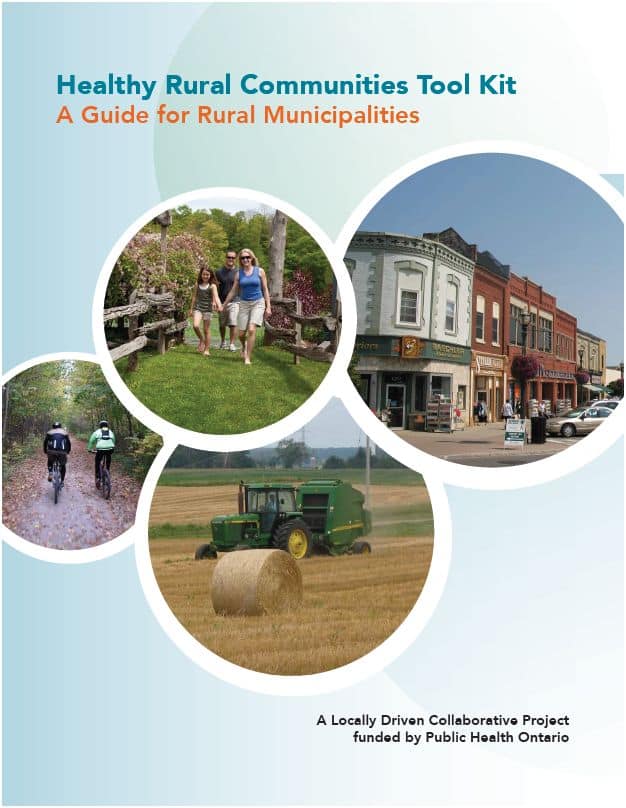This tool kit recognizes that low population density, an expansive rural landscape, dispersed population and small urban settlements all challenge the built environment. Planning processes can help to engage residents, leading to strategies that can influence the built environment and the local economy. This ranges from community design, for example, improving walkability, to local economic development by helping to create employment and enhance quality of life.
This tool kit identifies land use and development strategies that can help to enhance the rural built environment and contribute to positive quality of life and health outcomes. The tool kit brings a rural lens to issues that are often viewed from an urban perspective. Numerous examples and innovative practices from across the province are profiled. This tool kit recognizes many characteristics associated with rural communities including a low density population, a declining population in some areas, aging citizens, youth out-migration, rural land uses and an economy that is significantly different from that of urban Ontario.
The objectives of the tool kit are:
- To identify existing effective land use planning policies and models of practice for healthy rural built environments.
- To recognize the benefits of a coordinated approach to rural planning and development that uses a range of regulatory and non-regulatory tools.
- To identify innovative land use planning policies and initiatives that can contribute to healthy communities and healthy populations.




